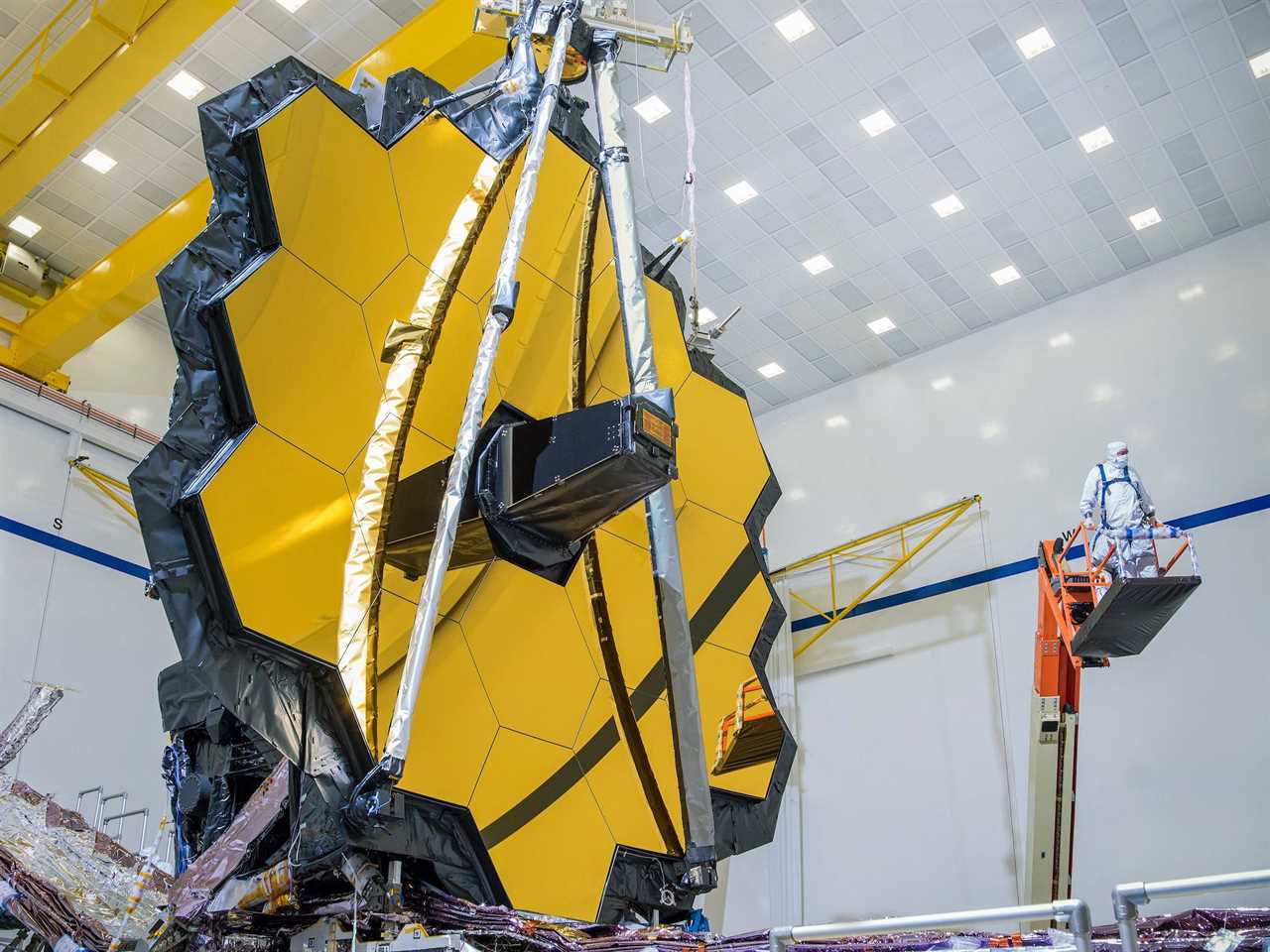NASA, ESA, CSA, Joseph Olmsted (STScI)
- NASA's James Webb Space Telescope found sand storms on a planet hundreds of trillions of miles away.
- Clouds on the "super Jupiter" planet are made up of scorching hot, tiny sand-like particles.
- One of Webb's greatest powers is its ability to see the contents of an alien atmosphere, based on light alone.
NASA's James Webb Space Telescope has proven just how powerful it is with its latest discovery: sand storms swirling on a planet 40 light-years from Earth, or about 235 trillion miles away.
One of Webb's greatest powers is its ability to decipher what's going on in alien atmospheres. From its vantage point in space, Webb can peer at a distant world and analyze the entire infrared spectrum of starlight passing through the planet's atmosphere.
Different spectra of light correspond to different elements, so Webb can show astronomers exactly which gases and vapors are in another world's atmosphere.

NASA/Chris Gunn
"While an image, we say is worth 1,000 words, spectra for astronomers are just worth 1,000 images," Antonella Nota, a Webb scientist at the Space Telescope Science Institute, previously said.
A hot, young planet with smoke-like sand clouds and 2 stars
In this case, clouds on a planet known as VHS 1256b are comprised of very small sand-like particles known as silicates, NASA said in a news release on Wednesday.
"It's kind of like if you took sand grains, but much finer. We're talking silicate grains the size of smoke particles," Beth Biller, a professor at the University of Edinburgh and the Royal Observatory Edinburgh, UK, told BBC News.
"That's what the clouds on VHS 1256b would be like, but a lot hotter. This planet is a hot, young object," Biller said, adding that the clouds' temperature would be similar to that of a candle flame.
At the highest levels of its atmosphere, the silicate clouds are a scorching 1,500 degrees Fahrenheit.
Webb also detected evidence of water, methane, carbon monoxide, and carbon dioxide, which is "the largest number of molecules ever identified all at once on a planet outside our solar system," according to NASA.

NASA, ESA, CSA, J. Olmsted (STScI); Science: Brittany Miles (University of Arizona), Sasha Hinkley (University of Exeter), Beth Biller (University of Edinburgh), Andrew Skemer (University of California, Santa Cruz)
The planet is a "super Jupiter" that's 12 to 18 times the size of our solar system's Jupiter, the BBC reported. And our own Jupiter is already 11 times wider than Earth. So, this is very big planet when compared to the worlds in our own cosmic neighborhood.
In an even more alien twist, this planet orbits two stars over a period of about 10,000 years. That's because it's extremely far away from its stars — about four times the distance between Pluto and the sun.
That means the stars' light doesn't drown out the light of the planet, making it an ideal target for the Webb telescope.
The planet's spectrum is a "treasure chest" of data which astronomers have only pulled a few coins from, NASA said. The researchers expect Webb will reveal more about this planet and others in the future.
Read More
By: [email protected] (Grace Eliza Goodwin,Morgan McFall-Johnsen)
Title: NASA's James Webb Space Telescope is so powerful it discovered sand storms on a planet 235 trillion miles away
Sourced From: www.businessinsider.com/nasa-james-webb-space-telescope-detects-sand-storms-distant-planet-2023-3
Published Date: Wed, 22 Mar 2023 21:15:40 +0000
Did you miss our previous article...
https://trendinginbusiness.business/politcal/new-starbucks-ceo-says-hell-work-a-halfday-behind-a-store-counter-monthly-as-he-plans-to-prioritize-human-connection-over-every-cup-of-coffee
.png)





